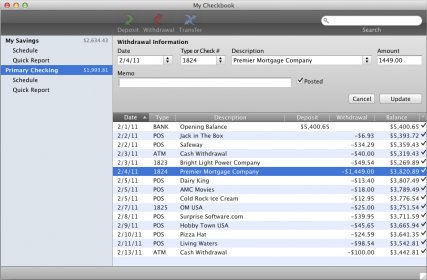
If they match, then you have a balanced checkbook.

If you’re using a paper checkbook register, you’ll record this number in the top spot above the spaces you use to log your transactions. You can find this information on either your bank’s website or through its mobile app. Look up the “current available balance” in your checking account.If you have never before balanced your checkbook, you need to start by recording your transactions-starting with your bank balance: With the statement in hand, you would compare the transactions you had listed by hand in your paper checkbook register with those shown in your bank statement.Īlthough this chore may look a bit different currently than it did our parents’ day, the basics of the job remain the same. It also is easier to identify problems, such as missed automatic payments, incorrectly assessed fees, fraudulent charges and even your own mathematical mistakes, when you have a regularly balanced checkbook.īalancing your checkbook used to be a chore reserved for a specific time each month: after receiving your monthly paper statement from the bank.Keeping a record of your banking transactions can help you track your spending, making budgeting a simpler process.

If a vendor charges you the wrong amount for a purchase, you may not otherwise know if you don’t balance your account at least once a month. You also can catch merchant errors more quickly if you reconcile regularly.Though rare, banks do sometimes make mistakes, and regularly balancing your checkbook allows you to catch such errors in a timely fashion.Making sure you recorded checks as you wrote them and reconciled your account with the bank’s statement ensured that you were never caught flat-footed when an old check finally cleared. Back when paper checks were more common, it could take quite some time for any one check to clear.There are several reasons for keeping such a record and balancing it regularly: Even today, when much (if not all) of your transaction information is available with the click of a button, it’s still a good idea to maintain a record of your transactions and regularly balance that record.īalancing your checkbook, which is also known as reconciling your account, is basically about making sure that the records you have kept for your financial transactions match those the bank lists on your statement.


 0 kommentar(er)
0 kommentar(er)
